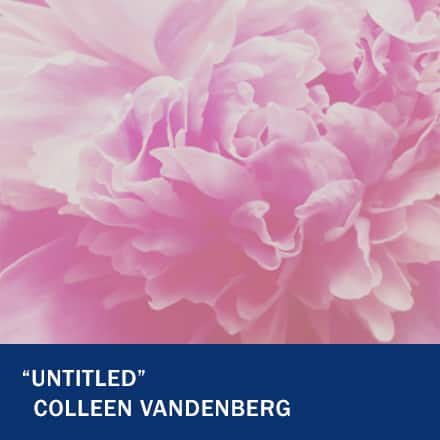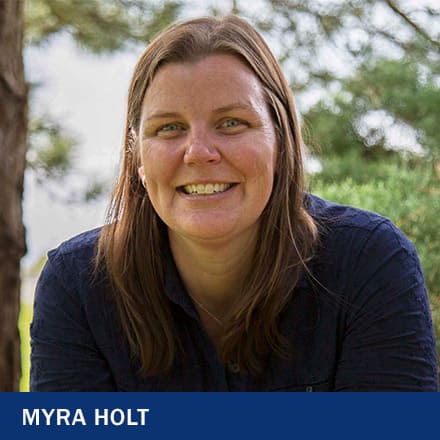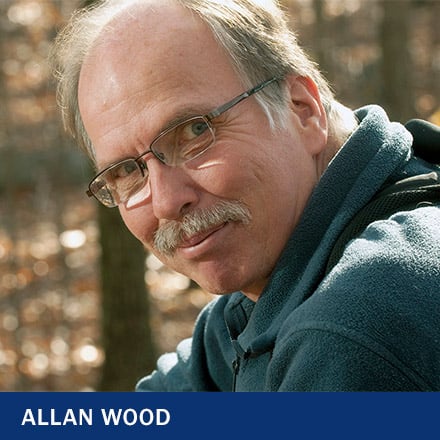Types of Photography

Photography is a wonderful medium for capturing reality, emotion, history and fantasy. Photographers can enjoy robust, diverse careers with opportunities in many industries. Armed with the knowledge of camera technology, editing and equipment, and possibly paired with graphic design skills, you can make yourself marketable and your photography career nearly limitless.
What is Photography?
“Photography is the act of creating an image through the recording of light via light-sensitive materials. It is a means of visual storytelling, as well as documenting the world around us,” said Colleen Vandenberg, fine arts adjunct faculty at Southern New Hampshire University (SNHU). 
Maize Arendsee, fine arts adjunct faculty at SNHU, expands on the origin of the word itself. “As an early technology, photography was given a name in Greek that literally just means ‘writing with light,’" they said. "And while there have been a lot of changes in the technologies used over the years, I think that’s still the core of it: photography is the science of using light to create images.”
The art of photography enables the preservation of a moment, emotion, mood, personality and the beauty or uniqueness of your subject. You can record factual reality with objective and truthful visual reporting. Photographers can document events and news for history and posterity.
“Photography gives us the ability to do two things: We can capture a scene exactly as it appears to the human eye, or use our own creativity to alter the physical appearance of the subject to create something outside of what we can naturally see or perceive,” Vandenberg said.
Photography can also be a tool for selling, whether it’s an object, real estate or just the resulting emotion to entice a buyer.
What Are the Types of Photography?
 As cameras and digital technologies evolve, as well as the changing needs and developing markets of the 21st century, more types and categories of photography will emerge, as will career opportunities.
As cameras and digital technologies evolve, as well as the changing needs and developing markets of the 21st century, more types and categories of photography will emerge, as will career opportunities.
Careers using photography are many and expanding all the time. Real estate, science, journalism, advertising and many corporations all have opportunities for a robust photography career.
Some of the most common types of photography jobs include:
Selling something:
- Commercial and Advertising
- Editorial
- Fashion
- Product
- Food
Presenting literal observation:
- Photojournalism (war, news, etc.)
- Fine art
- Still life
- Timelapse
Capturing moments:
- Family portraiture
- Headshots
- Wedding
- Event
- Newborn
- Sports
Beauty and additional fine art applications:
- Nature and wildlife
- Underwater
- Travel
- Stock photography
Mechanical, informational, engineering:
- Industrial
- Architectural
- Real estate
Science and medicine:
- Forensic
- Astrophotography
- Scientific
You can also consider types of photography within a framework of more broad genres. Arendsee titles these genres as:
- Utilitarian photography – security cameras, ID photos, etc.
- Amateur social/personal photography – taking photos with their cameras/cell phones, of everything around them, without trying to make “art” and without an intention of selling the images.
- Hobbyist photography – people taking photographs mostly for fun, of whatever they want, but with more intentionality and better gear than amateurs. Usually, they’re trying to be a bit artistic, but they’re still not trying to make a career out of it.
- Commercial photography – the goal being to sell them as non-art objects, e.g., product photography or stock photography. Commercial photography can bleed over into other areas.
- Professional social photography – hired to take more artistic photos of the same thing that amateur photographers would otherwise record: pets, weddings, pregnancy, events, etc.
- Photojournalism – taking photos that are theoretically not staged to report the news.
- Professional decorative art photography, sometimes called “fine art” photography – photos that are meant to be sold and viewed for enjoyment, usually in mass-produced ways such as magazines, books, posters, etc.
- Conceptual/Fine Art photography – photographs participating in the “art world” dialogue, designed to have conceptual meaning and interact within gallery and museum spaces. They may or may not be something meant to be sold/viewed for enjoyment, but their value is partly in the idea and the artist’s identity rather than in the image itself.
A ‘Focus’ on Fine Art

The marriage of photography to fine art is a longstanding one. Since photography’s inception, artists have experimented with blending the techniques and output of their photography into paintings, sculptures and other fine art expressions. And a background in fine art can enhance the photographer’s eye and their understanding of composition and image impact.
Vandenberg’s fine art degree helps her with “visual storytelling,” and photography is just one aspect of her process. “If you want to be a visual artist, it’s a great way to focus” your career, she said.
Creativity can flourish when photography and fine art meet. “My background is in fine art; I see photography really working with other mediums of art,” said Myra Holt, fine art adjunct faculty at SNHU. “For instance, graphic design. If you can take your own photos, that puts you a step ahead (in business). Incorporating a photograph with painting and collage, creating interactive art and merging together mediums… You can play and create images.”
Background and education in fine art can also allow you to craft a work/life balance that suits you. “I am a conceptional artist that uses photography as a form of expression and social commentary,” said Nancy Grace Horton, adjunct faculty at SNHU. “In my current lifestyle, I'm an adjunct professor; then I work on my fine artwork. I have a couple (of) galleries who sell my work, and I also do residencies and receive grants.”
What Are Important Elements of Photography?

Horton describes the elements of photography as “a technical skill. It’s scientific, it’s mathematical – yet it’s open to interpretation. It’s current; it’s cutting edge, it’s ubiquitous, it’s essential. It’s how we communicate.”
Vandenberg discusses the technical elements. “Light, exposure, camera angle, composition and theme are essential tools in photography. The elements and principles of design (color, texture, line, contrast), as well as post-production editing (Photoshop and such), are additional devices we use to craft a mood and drive a visual narrative,” she said. “Everything in the photographic frame serves as a symbol or metaphor for the viewer.”
 Truth and perspective are also key elements in photography. “It has the power to manipulate, simply from the photographer’s viewpoint. (It) can determine the viewer’s perception,” Horton said. “For example, is this event empty or crowded? It depends (on) how I frame the picture.” She also notes that because technology allows for the manipulation of the true literal image captured, she hopes that this possibility “forces people to question everything, without just believing whatever is shown as reality.”
Truth and perspective are also key elements in photography. “It has the power to manipulate, simply from the photographer’s viewpoint. (It) can determine the viewer’s perception,” Horton said. “For example, is this event empty or crowded? It depends (on) how I frame the picture.” She also notes that because technology allows for the manipulation of the true literal image captured, she hopes that this possibility “forces people to question everything, without just believing whatever is shown as reality.”
Arendsee takes an all-encompassing view to the question. “Well… there’s the photographer, the camera, the lens and the photographic medium," they said. "If it’s a digital photograph or an analog method that uses negatives, there’s also the element of developing and post-processing."
They added the following considerations are just as important, "whether drawn with light or drawn with a charcoal stick or painted with oils":
- Compositional qualities (such as line, balance, framing, geometry, etc.)
- Value (light and shadow)
- Color (or lack thereof)
- Texture
“There’s the elemental meaning of the final image itself, which is shaped both by the photographer’s intent, the subject’s own agency and the audience’s reaction,” they said.
How Do I Become a Successful Photographer?
Here are some tips on “developing” your photography career:
Have a Degree

Some beginning photographers may feel like their creativity and passion for it will be enough to make a career out of it. But having a degree in photography, especially if paired with additional graphic design education, can jump-start your career. “A lot of times, I’ll be asked ‘why should I get a degree when I can watch great instructional YouTube tutorials?’” said Vandenberg. “In a degree program, you can learn everything you’d learn on the job (that would take you) 10 years – with support. It’s the difference between gardening with dirt versus gardening with Miracle-Gro.
It’s also noteworthy that many online job postings can have a program that filters out applicants who do not have a degree. You can avoid those gatekeeping restrictions of not having a degree; it’s only going to help and enhance your marketability along with your experience.
Assist and Network
“Start at the bottom, make yourself a collaborative portfolio, network... then reach out to companies and stylists and offer to assist and work your way up,” Vandenberg suggests. “If they’re overbooked and you’ve proven yourself, (they could) hand the job off to you. I also recommend getting set up with a photo rep to help you get jobs.”
Connect with Local Businesses
Even while you’re still in school, you can accomplish your assignments by including a local business. Once they see your (free) example, this can turn into future paid opportunities for you to create marketing pieces, menu and website photos or design, signage and more. And they can recommend you to other people as well.
Be Open to Changing Direction
Sometimes, your initial work endeavors open doors to other niche photography opportunities, said Vandenberg. “For example, my husband started as assisting photographers, then building sets and props," she said. "He’s in a different role, but without his background in photography, he wouldn’t have segued to this and become successful.”
Have a Niche
If you can set yourself apart with a nice subject or style, that can help you succeed. “Many want to take beauty shots of landscapes, nature. But you’ll need to be specific,” said Allan Wood, graphics and communication instructor at SNHU. “My niche was shooting lighthouses; I shot all 168 of them in New England. Another example right now is photos of human diversity, which is a hot topic.”
 Holt noted that “one student of mine really loves cars, and she’s now bringing a new female viewpoint to car photography. You can find your niche; think about ‘I like this topic, I have a degree, I can be a freelancer and work for myself.’”
Holt noted that “one student of mine really loves cars, and she’s now bringing a new female viewpoint to car photography. You can find your niche; think about ‘I like this topic, I have a degree, I can be a freelancer and work for myself.’”
You can also create a niche by developing an educational product. “Can you create a concept-to-completion instructional book? You can earn royalties on those for years,” Wood said. “It’s one way to make money. I wrote a project book on how to use programs using images I took. I’ve used the royalties from seven editions of that book to buy my equipment, so that’s nice.”
Have a ‘Day Job’
The unfortunate reality of pursuing a career in photography is that it can take a while to become lucrative, and there can be lulls in assignments. You will possibly need an anchor job to make ends meet.
“A lot of people think they’ll make a lot of money doing photography. Unless you’re doing wedding photography, it’s a rare occasion. There are things people can do, but full-time photographer is a tough one,” Wood said.

He acknowledged that weddings can be lucrative, but often only for six months out of the year; photographers may need another revenue stream set up to compensate for any slow times. Wood shot weddings but also had a portrait studio for the other half of his business. "I also had to rely on doing (other people’s) prints during the dead season, developing 1-hour and large-format prints,” he said.
Vandenberg recommended having a day job while you get your foot in the door for your desired photography area. She also encourages students to maximize their time in school to flesh out their portfolios in the most professional way possible, imagining each assignment as a real-life job.
“While in school, think about the teacher as your client – you want to meet and exceed their criteria," she said.
Teaching can be a great job, as can photojournalism, Horton said of her own experience. “(Being a) professor has stability of work; it’s grounding. I was a stringer for the Boston Globe (for a while and) that was my stability," she said. "What’s important is to have some grounding, a photography position that can be steady and supports you. Having these jobs keeps me current, out in the world.”
If you have the goal of working for yourself as a freelancer, it can provide freedom and variety but may not immediately pay the bills. But some see the benefits outweighing the difficulties. “Some students are poised to commercialize their fine art," Horton said. "It’s a lot of work, though. To be a freelancer, be prepared to be everything and be motivated. I look at job postings – for example, a car dealership needs a full-time photographer. That wasn’t a job before. It’s becoming more important because it’s so relevant for companies to stay current and refresh their content.”
Where is the Future of Photography Heading?
With the advent of digital photography and the ubiquitous cell phone that boasts ever-increasing quality camera capabilities in everyone’s pocket, there’s an ironic twist to career opportunities in the future of photography. Whereas one might worry about becoming an obsolete commodity, the prevalence of these types of photos has created a refreshed need for the old ways.
 But now, those wanting a photographic career need to offer what laypeople cannot: studio work. “For corporate portraits and family groups, et cetera," she said.
But now, those wanting a photographic career need to offer what laypeople cannot: studio work. “For corporate portraits and family groups, et cetera," she said.
Another way photographers might switch gears is due to the glut of online content and a dearth of submission opportunities. Wood recommends that instead of working to get into stock photography companies or calendars – which are both oversaturated with submissions and have slashed their payments on the images they do take – consider using the internet differently: Create a following for your tips and training videos, he said.
“Using your photography, set up a blog with a certain subject – for me, I do lighthouse rescue blogs once a month. In those blogs, I'll refer to other things you can visit if you go to that lighthouse. Links between pages and referrals get me pay-per-clicks. But you need a thousand a month,” Wood said.
He also recommends a YouTube presence. “If I was to do it over again, I’d start setting up YouTube blogs talking about photography that send people to your website," he said. “Rather, get people to follow you for your knowledge – whether it’s program instruction or advice. Get a following."

The most important concentrations for the future photographer, though, are a strong knowledge of their equipment and the emerging technology of digital and graphic design, married with their creativity, eye and, most of all, passion.

Matthew Kearl, web adjunct faculty at SNHU, would concur with following your passion. Kearl is enjoying a hobby of astrophotography that he only recently developed. An engineer and highly technical person by trade and education, Kearl used the pandemic quarantine to not only pursue this long-term interest but to teach himself how to do it from the ground up.
“I’ve always wanted a telescope. Using a friend’s, I saw the rings of Saturn. Then during the pandemic, I got a telescope and attached a cell phone to it. (One of my first shots was) of Orion's Nebula. Compare that to a shot six months later; one’s a smudge versus the spectacular. It’s amazing,” he said.
Though highly technical, it was worth it to him to take the time to educate himself and learn how to take his spectacular deep space images. “I totally wanted to figure this out. People can do it themselves, too. There’s a huge community online of YouTubers and forums; you can figure it out. I do it right from my backyard.”
As photographers aim their lenses at the future – whether it’s previously unseen galaxies or microscopic discoveries, or just capturing a vital moment in someone’s life – what you “develop” is up to you.
Kathleen Palmer is an award-winning journalist and writer.
Explore more content like this article

What Can You Do With an English Degree?

Academic Spotlight: Dr. Christopher Lee, Associate Dean of English Programs

SNHU Spotlight: Ashley Smith, BA in Communication Grad
About Southern New Hampshire University

SNHU is a nonprofit, accredited university with a mission to make high-quality education more accessible and affordable for everyone.
Founded in 1932, and online since 1995, we’ve helped countless students reach their goals with flexible, career-focused programs. Our 300-acre campus in Manchester, NH is home to over 3,000 students, and we serve over 135,000 students online. Visit our about SNHU page to learn more about our mission, accreditations, leadership team, national recognitions and awards.


